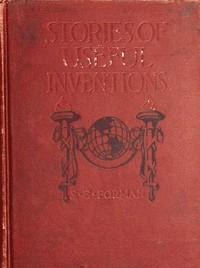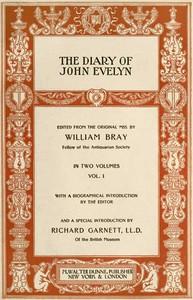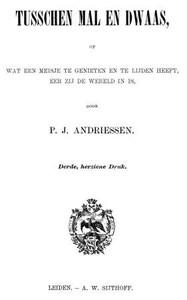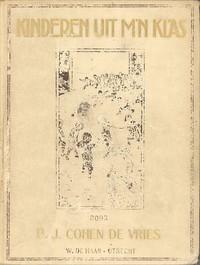Read this ebook for free! No credit card needed, absolutely nothing to pay.
Words: 52331 in 25 pages
This is an ebook sharing website. You can read the uploaded ebooks for free here. No credit cards needed, nothing to pay. If you want to own a digital copy of the ebook, or want to read offline with your favorite ebook-reader, then you can choose to buy and download the ebook.


: The Pre-Columbian Discovery of America by the Northmen Illustrated by Translations from Icelandic Sagas by DeCosta B F Benjamin Franklin - America Discovery and exploration Norse
e fact that he officiated in the cathedral at Gardar in 1409.
LOST GREENLAND FOUND.
It remained, therefore, for Hans Egede, in 1721, to reopen communication, and demonstrate the reality of the previous occupation. Columbus himself did not meet with greater trials and mortification than did this good man for the space of eleven years, during which period he labored to persuade the authorities to undertake the rediscovery. But his faith and zeal finally overcame all hostility and ridicule, and on the second day of May, 1721, he went on board the Hope, with his wife and four young children, and landed at Ball's river in Greenland on the third of the following month. Here he spent the best portion of his life in teaching the natives Christianity, which had been first introduced seven centuries before, and in making those explorations the results of which filled the mind of Europe with surprise, and afforded a confirmation of the truthfulness of the Icelandic Sagas.
THE CHARACTER AND ACHIEVEMENTS OF THE NORTHMEN.
Let us now return to the consideration of the Icelandic voyages to the American Continent, though not without first seeking a better acquaintance with the men by whom they were performed.
We have already seen that the Northmen were a people of no inferior attainments. Indeed, they constituted the most enterprising portion of the race, and, on general principles, we should therefore view them as fitted even above all the men of their time for the important work of exploration beyond the seas. They had made themselves known in every part of the civilized world by their daring as soldiers and navigators. Straying away into the distant east from whence they originally came, we see them laying the foundation of the Russian empire, swinging their battle-axes in the streets of Constantinople, carving their mystic runes upon the Lions of the Areopagus, and filling the heart of even the great Charlemagne with dismay. Says Dasent, when summing up their achievements: "In Byzantium they are the leaders of the Greek emperor's body guard, and the main support of his tottering throne. From France, led by Rollo, they tear away her fairest province and found a long line of kings. In Saxon England they are the bosom friends of such kings as Athelstane, and the sworn foes of Ethelred the Unready. In Danish England they are the foremost among the thanes of Canute, Swein and Hardicanute, and keep down the native population with an iron heel. In Norman England," he continues, "the most serious opposition the conqueror meets with is from the colonists of his own race settled in Northumbria. He wastes their lands with fire and sword, and drives them across the border, where we still find their energy, their perseverance, and their speech existing in the lowland Scotch. In Norway they dive into the river with King Olaf Tryggvesson, the best and strongest champion of his age, and hold him down beneath the waves so long that the bystanders wonder whether either king or Icelander will ever reappear on the surface. Some follow Saint Olaf in his crusades against the old faith. Some are his obstinate foes, and assist at his martyrdom. Many follow Harold the Stern to England when he goes to get his 'seven feet' of English earth, and almost to a man they get their portion of the same soil, while their names grow bright in song and story." And finally, "From Iceland as a base, they push on to Greenland and colonize it: nay, they discover America in those half-decked barks."
THE SHIPS OF THE NORTHMEN.
The Northmen were excellent navigators. They were, moreover, it has been claimed, the first to learn the art of sailing on the wind. They had good sea-going vessels, some of which were of large size. We have an account in the Saga of Olaf Tryggvesson of one that in some respects was remarkable. It is said that "the winter after King Olaf Tryggvesson came from Halogeland. He had a great ship built at Ledehammer, which was larger than any ship in the country, and of which the beam-knees are still to be seen. The length of the keel that rested upon the grass was seventy-four ells. Thorberg Skafting was the man's name who was the master builder of the ship, but there were many others besides; some to fell the wood, some to shape it, some to make nails, some to carry timber, and all that was used was the best. The ship was both long and broad and high sided, and strongly timbered.... The ship was a dragon, built after the one that the king had captured in Halogaland, but it was far longer and more carefully put together in all her parts. The Long Serpent had thirty-four benches for rowers. The head and arched tail were both gilt, and the bulwarks were as high as in sea-going ships. This ship was the best and most costly ever built in Norway."
THE DISCOVERY OF AMERICA.
We find that the Northmen were well acquainted with other parts of the world, and that they possessed all the means of reaching the continent in the west. We come, therefore, to the question: Did the Northmen actually discover and explore the coast of the country now known as America?
It might also be argued, if it were at all necessary, that, if these Sagas were post-Columbian compositions drawn up by Icelanders who were jealous of the fame of the Geneose navigator, we should certainly be able to point out something either in their structure, bearing, or style by which it would be indicated. Yet such is not the case. These writings reveal no anxiety to show the connection of the Northmen with the great land lying at the west. The authors do not see anything at all remarkable or meritorious in the explorations, which were conducted simply for the purpose of gain. Those marks which would certainly have been impressed by a more modern writer forging a historical composition designed to show an occupation of the country before the time of Columbus, are wholly wanting. There is no special pleading or rivalry, and no desire to show prior and superior knowledge of the country to which the navigators had from time to time sailed. We only discover a straightforward, honest endeavor to tell the story of certain men's lives. This is done in a simple, artless way, and with every indication of a desire to mete out even handed justice to all. And candid readers who come to the subject with minds free from prejudice, will be powerfully impressed with the belief that they are reading authentic histories written by honest men.
THE LITERATURE OF ICELAND.
Free books android app tbrJar TBR JAR Read Free books online gutenberg
More posts by @FreeBooks


: The Diary of John Evelyn (Volume 1 of 2) by Evelyn John Garnett Richard Commentator Bray William Editor - Great Britain History Stuarts 1603-1714; Great Britain Court and courtiers Early works to 1800; Evelyn John 1620-1706 Diaries; Great Britain Social li







